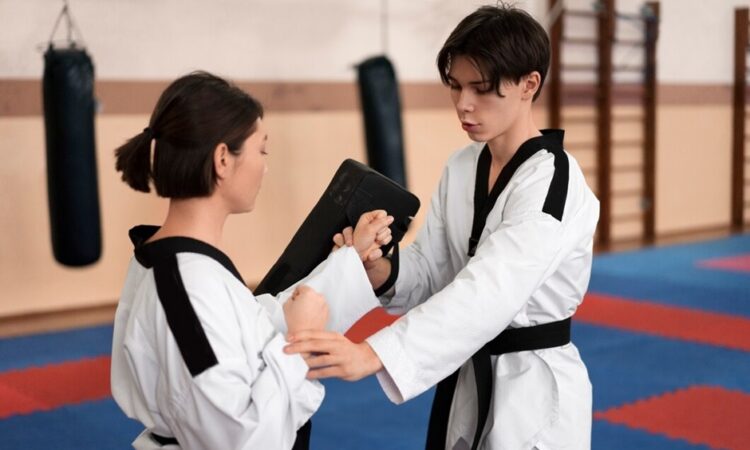
In an unpredictable world, understanding how to protect oneself is paramount. Self-defense encompasses various strategies and techniques that can empower individuals to feel safer and more secure. This article explores essential components of effective self-defense, including martial arts classes, the importance of a license to carry course, and other fundamental skills and knowledge.
Martial Arts Classes: Enhance Your Self-Defense Skills
One of the most comprehensive ways to equip yourself with self-defense techniques is by enrolling in martial arts classes. Various disciplines, such as Brazilian Jiu-Jitsu, Krav Maga, Muay Thai, and Karate, provide practical skills for self-defense in real-life situations. These classes not only teach physical techniques but also enhance mental preparedness and discipline.
Benefits of Martial Arts Training
- Physical Fitness: Regular training improves strength, agility, and endurance, which are crucial for effective self-defense. A fit body can react more swiftly and efficiently in threatening situations.
- Self-Discipline: Martial arts training emphasizes mental focus and self-control. Practitioners learn to remain calm under pressure, an essential quality in self-defense scenarios.
- Situational Awareness: Classes often cover how to read body language and recognize potential threats, which can prevent confrontations before they escalate.
- Confidence Building: As individuals progress in their training, their self-esteem and confidence grow. This increased confidence can deter potential attackers, as they are less likely to target someone who appears self-assured.
Choosing the Right Class
When selecting a martial arts class, consider your personal interests and physical capabilities. Research local schools and instructors, read reviews, and attend introductory classes to find the best fit. The goal is to find a supportive environment that encourages growth and learning.
License to Carry Course: Understanding Your Rights and Responsibilities
In addition to physical self-defense skills, understanding the legal aspects of self-defense is crucial. A license to carry course is designed to educate individuals about firearm safety, proper handling, and the laws governing the use of firearms for self-defense.
Importance of a License to Carry Course
- Legal Knowledge: Participants learn about the legal ramifications of carrying a firearm, including when and how it can be used. This knowledge is essential to avoid legal repercussions and ensure responsible ownership.
- Safety Training: Courses typically include comprehensive firearm safety training, teaching individuals how to handle, store, and transport firearms safely. Understanding safe practices is vital to prevent accidents and ensure the safety of oneself and others.
- Conflict Resolution: Many courses emphasize de-escalation techniques and conflict resolution strategies. This knowledge is invaluable in situations where physical confrontation can be avoided.
- Community Responsibility: By taking a license to carry course, individuals demonstrate a commitment to responsible firearm ownership. This responsibility includes understanding the impact of one’s actions on the community and prioritizing safety.
Personal Awareness and Avoidance Strategies
While martial arts training and firearm safety courses are crucial components of self-defense, personal awareness plays a vital role in preventing confrontations. Developing an understanding of your surroundings can significantly reduce the risk of becoming a target.
Key Personal Safety Tips
- Stay Alert: Be aware of your surroundings and the people around you. Avoid distractions, such as your phone, when walking in public spaces.
- Trust Your Instincts: If something feels off, trust your instincts and take action to remove yourself from the situation.
- Plan Your Routes: Whether walking, driving, or using public transport, plan safe routes and avoid poorly lit or isolated areas.
- Establish a Safety Network: Share your plans with trusted friends or family members. Establishing a safety network can provide an added layer of security.
Basic Self-Defense Techniques
Even if you cannot enroll in martial arts classes or take a license to carry course immediately, learning some basic self-defense techniques can be beneficial. These techniques can provide a foundation for self-defense and may be useful in various situations.
Simple Techniques to Learn
- Striking Techniques: Familiarize yourself with basic striking techniques, such as palm strikes, elbows, and knee strikes. These can be effective in a self-defense situation.
- Escaping Holds: Learn how to escape common holds, such as wrist grabs or chokeholds. Knowing how to break free can be crucial in a confrontation.
- Use of the Environment: Understand how to use your surroundings to your advantage. This includes using objects as shields or obstacles to create distance from an attacker.
- Self-Defense Tools: Consider carrying self-defense tools, such as pepper spray or personal alarms. While these should not be your sole reliance, they can provide an additional layer of protection.
Conclusion
Self-defense is not just about physical combat; it involves a holistic approach to personal safety that includes martial arts training, understanding legal responsibilities, and enhancing personal awareness. By investing time in self-defense education and training, individuals can develop the skills and confidence necessary to protect themselves effectively. Whether through martial arts classes, a license to carry course, or basic self-defense techniques, the goal remains the same: empowering yourself to navigate the world safely and confidently.



